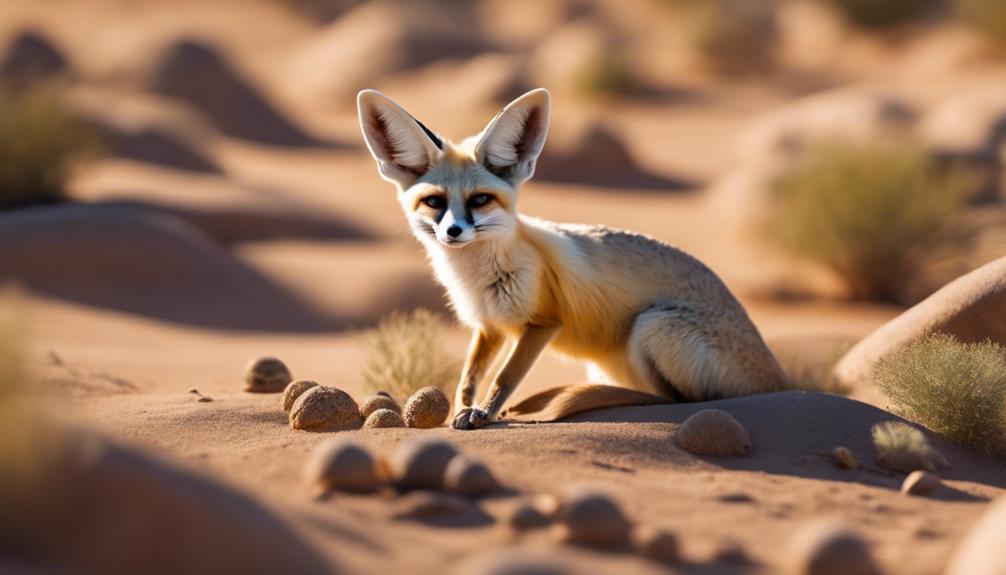In the desert, carnivores like bobcats skillfully hunt hares and birds. Gray foxes blend into rocky terrains to catch rodents, while mountain lions prowl for deer and elk. Coyotes are versatile, preying on bison and rabbits, and African wild dogs work together to target antelopes. Avian carnivores like roadrunners swiftly capture insects and snakes, and Harris's Hawks team up to catch larger prey such as rabbits. Reptilian predators like scorpions and Gila monsters use venom and powerful jaws to conquer their prey. Explore the vibrant world of desert carnivores with these striking examples!
Mammalian Desert Carnivores
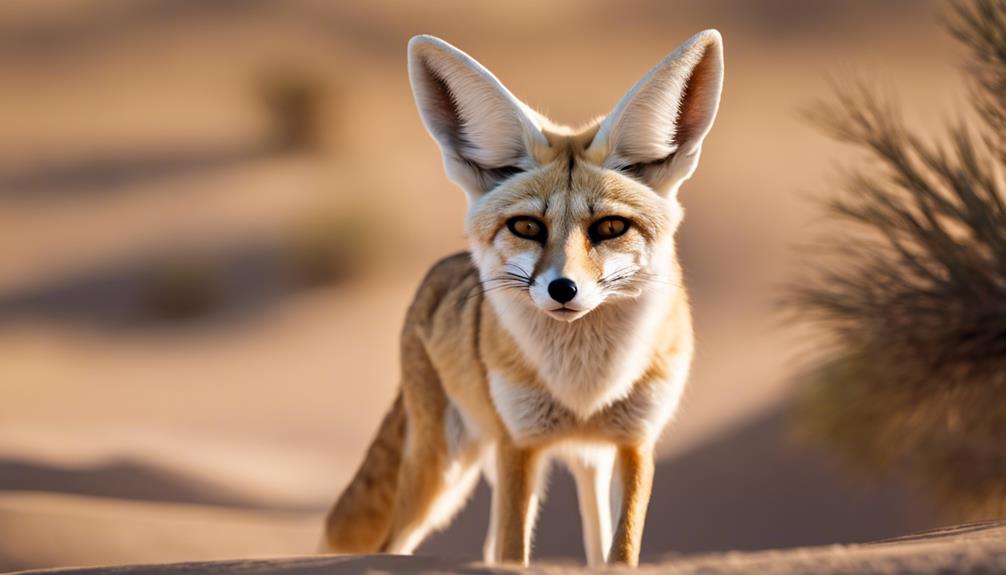
In the vast deserts of the world, mammalian carnivores such as bobcats, gray foxes, mountain lions, coyotes, African wild dogs, and golden jackals thrive in their natural habitats. These predators have adapted to the harsh desert environments, showcasing impressive hunting skills and survival instincts. Bobcats, found in North America, stealthily hunt hares, rabbits, and birds, utilizing their agility to secure prey. Gray foxes, inhabitants of rocky regions, prey on rodents and rabbits, blending into their surroundings with their gray fur.
Mountain lions, known for their majestic presence, roam rocky and desert terrains preying on deer, elk, and rabbits. Coyotes, resembling wolves, demonstrate remarkable versatility in their diet, hunting bison, deer, and rabbits, with adaptations to cope with changing food availability in winter. African wild dogs, endangered canines, live in diverse habitats and exhibit cooperative hunting behaviors, targeting antelopes and rodents. Golden jackals, residing in arid grasslands and deserts, hunt in packs, preying on rodents, gazelles, and birds with remarkable coordination.
These mammalian desert carnivores play important roles in maintaining the delicate balance of desert ecosystems.
Avian Desert Carnivores
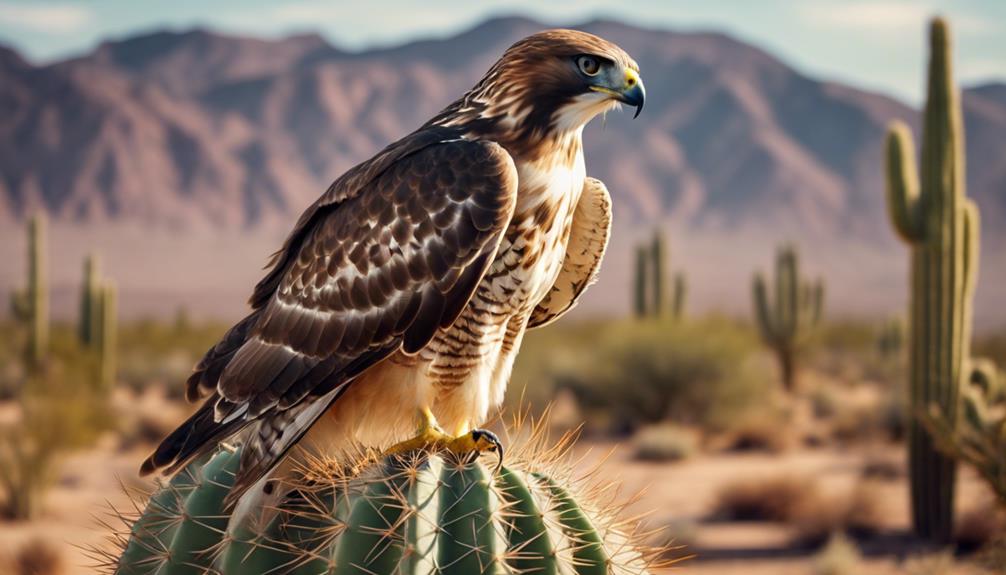
Roadrunners, commonly found in arid lands, display impressive hunting skills as they prey on insects, rodents, and snakes with remarkable agility. These birds are known for their quick movements and can even consume rattlesnakes due to their speed and technique. Their diet consists of a variety of small animals, making them efficient predators in the desert ecosystem.
Another avian desert carnivore is the Harris's Hawk, known for its cooperative hunting behavior. These birds of prey work together in groups to catch larger prey like rabbits and small mammals. This teamwork sets them apart from solitary hunters and allows them to tackle larger animals that would be challenging for a single hawk.
In addition, the Burrowing Owl is a fascinating desert carnivore that primarily feeds on insects, small mammals, and reptiles. These owls are unique in their ability to live in burrows underground, providing them with shelter and safety while they hunt for their next meal in the arid desert landscape.
Reptilian Desert Carnivores
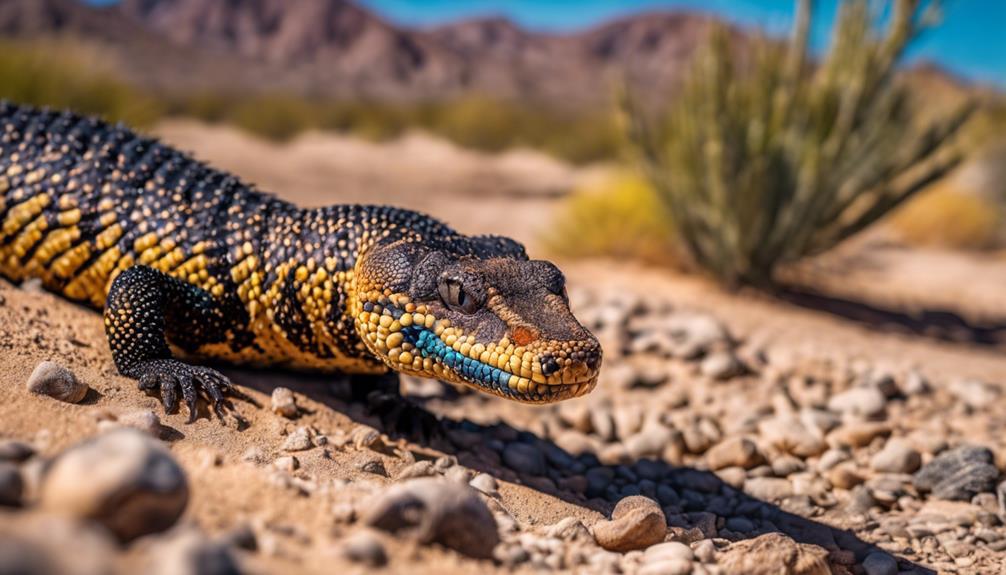
Thriving in desert environments, reptilian carnivores exhibit fascinating hunting behaviors and adaptations to survive in harsh conditions. Among them, scorpions are formidable predators preying on insects, invertebrates, and even some vertebrates. These arachnids use their venomous stingers to immobilize prey efficiently.
Gila monsters, found in the Southwestern US and northwestern Mexico, are known for their unique hunting strategy, relying on their powerful jaws to crush the shells of their prey, such as rodents, rabbits, and birds. Diamondback rattlesnakes, thriving in various habitats, specialize in ambushing their prey with lightning-fast strikes, targeting animals like rabbits, gophers, and birds.
Horned lizards, adapted to arid or semi-arid regions, have a specialized diet consisting mainly of ants, sowbugs, and spiders. These reptilian carnivores have evolved remarkable skills to hunt and survive in the harsh desert landscapes, demonstrating nature's incredible diversity and adaptability.
Unique Desert Carnivores
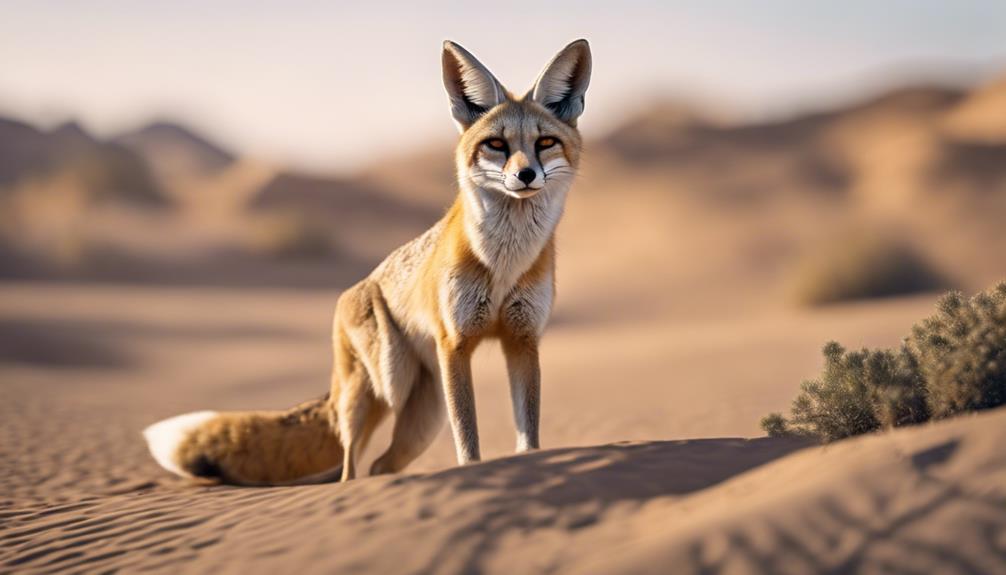
With their specialized hunting techniques and adaptations, desert carnivores exhibit remarkable diversity in their predatory behaviors. Among the unique desert carnivores, the Fennec Fox stands out with its oversized ears that help regulate body temperature in the scorching desert heat. These adorable foxes mainly feed on insects, small rodents, and birds, showcasing their ability to thrive in harsh desert environments.
Another fascinating desert carnivore is the Caracal, a medium-sized wild cat known for its remarkable jumping ability, allowing it to catch birds in mid-air. These agile predators also hunt small mammals and sometimes even larger prey like antelopes. Their tufted ears and reddish-brown fur make them a striking sight in the arid landscapes they call home.
The Aardwolf, a hyena species, is a specialized termite eater found in African deserts. Despite its hyena classification, it primarily feeds on insects, especially termites, using its long, sticky tongue to extract them from mounds. This unique dietary preference sets the Aardwolf apart from its carnivorous relatives.
Desert Carnivores in Action
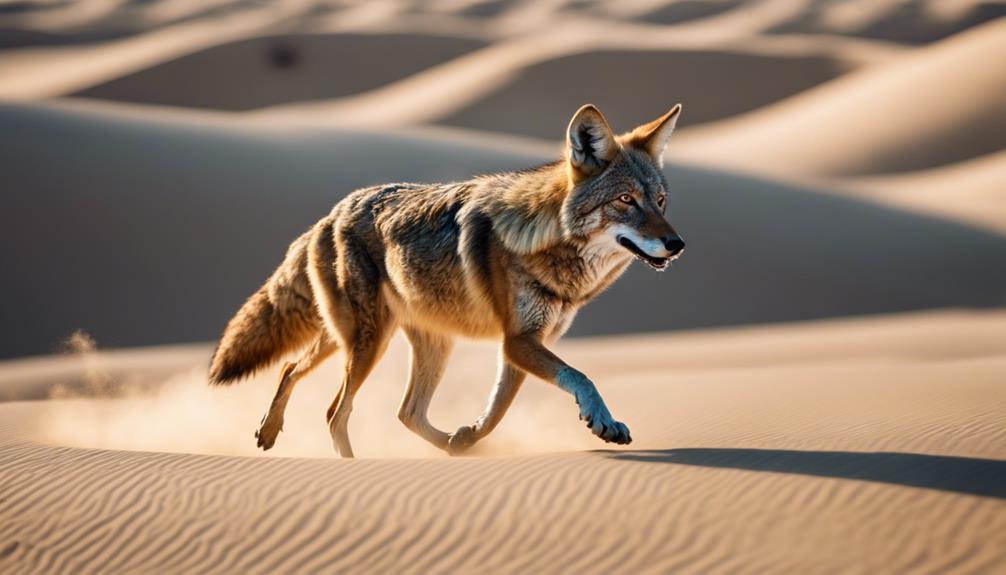
In the desert, carnivores showcase their predatory prowess through stealthy hunts and strategic adaptations to survive in harsh environments. Witness the bobcat's agile movements as it stalks its prey, blending seamlessly with the sandy terrain before pouncing with precision. The gray fox, with its keen senses, patiently waits for the right moment to ambush rodents darting among the rocks. Mountain lions exhibit their strength and speed as they pursue deer through rugged desert landscapes. Coyotes, versatile opportunists, adjust their diets with the changing seasons, preying on bison, deer, and rabbits. African wild dogs demonstrate remarkable teamwork, coordinating hunts to take down agile antelopes. Golden jackals, with their pack mentality, work together to capture swift rodents and graceful gazelles.
In action, desert carnivores reveal their evolutionary adaptations and hunting strategies, showcasing the intricate balance of survival in harsh desert ecosystems. From swift birds like roadrunners to camouflaged reptiles like scorpions, each carnivorous species plays a significant role in the intricate web of desert life.

Erzsebet Frey (Eli Frey) is an ecologist and online entrepreneur with a Master of Science in Ecology from the University of Belgrade. Originally from Serbia, she has lived in Sri Lanka since 2017. Eli has worked internationally in countries like Oman, Brazil, Germany, and Sri Lanka. In 2018, she expanded into SEO and blogging, completing courses from UC Davis and Edinburgh. Eli has founded multiple websites focused on biology, ecology, environmental science, sustainable and simple living, and outdoor activities. She enjoys creating nature and simple living videos on YouTube and participates in speleology, diving, and hiking.
🌿 Explore the Wild Side!
Discover eBooks, guides, templates and stylish wildlife-themed T-shirts, notebooks, scrunchies, bandanas, and tote bags. Perfect for nature lovers and wildlife enthusiasts!
Visit My Shop →
